Welcome to the TRUZA0121KA70NA Installation Manual. This guide provides detailed instructions for installing and configuring your system‚ ensuring optimal performance and safety. Designed for residential and light commercial use‚ it covers essential steps and requirements for a successful setup.
1.1 Overview of the TRUZA0121KA70NA Model
The TRUZA0121KA70NA is a high-efficiency‚ single-zone heat pump system designed for residential and light commercial applications. It features a wall-mounted indoor unit paired with a universal outdoor unit‚ offering both heating and cooling capabilities. With a capacity of 12‚000 BTU/H‚ this system is ideal for spaces requiring precise temperature control‚ such as server rooms‚ classrooms‚ and small offices. Its compact design and quiet operation make it a versatile solution for various environments. The system uses R-410A refrigerant‚ ensuring environmental compliance and energy efficiency. This model is part of the TPKA0A 1KA70 Series‚ known for its reliability and performance in meeting cooling and heating demands effectively.
1.2 Importance of Following the Installation Manual
Adhering to the TRUZA0121KA70NA Installation Manual is crucial for ensuring a safe‚ efficient‚ and correct setup. Proper installation guarantees optimal performance‚ energy efficiency‚ and system longevity.
Deviation from the guidelines can lead to malfunctions‚ safety hazards‚ or even void the warranty. The manual provides precise instructions tailored to the unit’s specifications‚ ensuring compliance with industry standards and regulations.
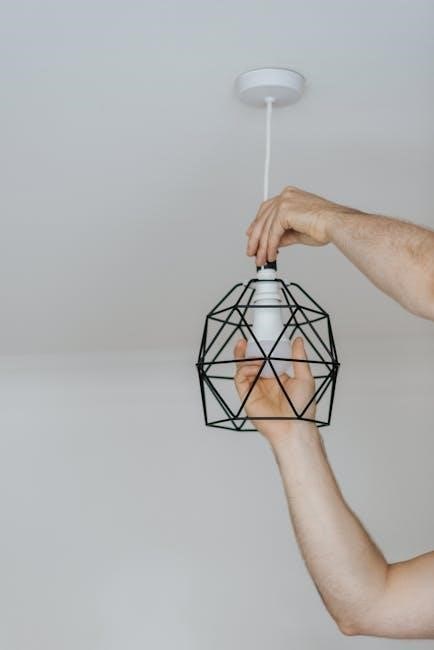
By following the manual‚ installers can avoid common errors‚ reduce the risk of refrigerant leaks‚ and ensure all safety protocols are met. This adherence also minimizes the need for costly repairs and downtime.
Always refer to the manual for specific details‚ as it is designed to address the unique requirements of the TRUZA0121KA70NA model‚ ensuring a reliable and efficient cooling or heating system.
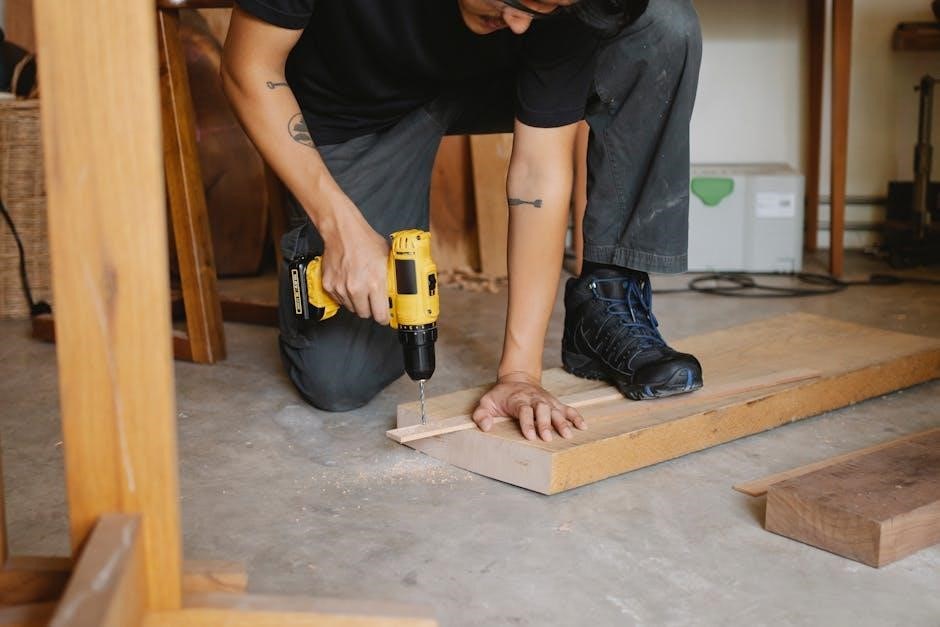
Safety Precautions and Guidelines
Always wear protective equipment‚ including gloves and safety glasses‚ during installation. Ensure proper ventilation and avoid working near open flames or sparks. Follow all electrical safety standards strictly.
2.1 Essential Safety Equipment and Tools
Ensure you have the necessary safety equipment and tools before starting the installation. Protective gear includes safety glasses‚ gloves‚ and a dust mask. Essential tools include a multimeter‚ vacuum pump‚ and refrigerant leak detector. Use a torque wrench for securing connections and a tubing cutter for precise copper pipe cuts. Always maintain a clean‚ well-ventilated workspace to prevent accidents. Keep a fire extinguisher nearby. Proper insulation tools and a pressure gauge are crucial for system integrity. Adhere to all safety guidelines to ensure a secure and efficient installation process. Proper equipment ensures compliance with industry standards and prevents potential hazards during and after installation. Safety is paramount for both personnel and system longevity.
2.2 General Safety Instructions for Installation
Always wear appropriate protective equipment‚ including gloves and safety glasses‚ when handling system components. Ensure the installation area is clear of obstacles and properly ventilated. Use a ladder or lift safely‚ and never work on the system while standing on an unstable surface. Avoid overreaching or bending excessively. Disconnect power supplies before performing any electrical work. Follow proper lifting techniques to prevent injury. Keep loose clothing and long hair tied back to avoid entanglement with moving parts. Ensure all tools are in good condition and suitable for the task. Never attempt to modify or bypass safety features. Keep children and unauthorized personnel away from the installation site. Properly dispose of packaging materials and waste. Regularly inspect equipment for damage before use.
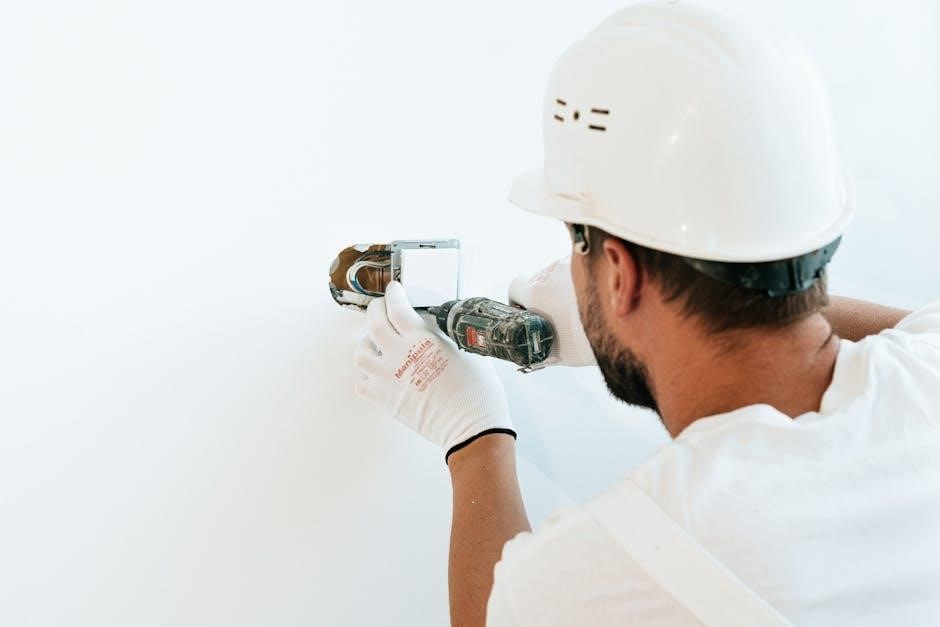
System Components and Accessories
The TRUZA0121KA70NA system includes an R410A outdoor unit‚ a wall-mounted indoor unit‚ and essential accessories like remote controllers‚ mounting brackets‚ and refrigerant lines for optimal functionality.
3.1 Indoor Unit Specifications and Features
The TRUZA0121KA70NA indoor unit is a wall-mounted‚ 12‚000 BTU/h system designed for efficient heating and cooling. It features a compact design‚ making it ideal for small spaces like offices‚ classrooms‚ and server rooms. The unit operates with a high-efficiency fan motor‚ ensuring quiet operation and consistent airflow. Key features include a built-in drain pump‚ multiple fan speeds‚ and an easy-to-use remote controller. The indoor unit is compatible with the R410A refrigerant‚ ensuring environmental compliance. Its sleek‚ modern design blends seamlessly into various interiors while providing reliable performance. Proper installation and maintenance are essential to maximize its efficiency and longevity. Always refer to the manual for specific technical specifications and installation requirements.
3.2 Outdoor Unit Specifications and Features
The outdoor unit of the TRUZA0121KA70NA system is designed as a heat pump‚ operating with R410A refrigerant for efficient cooling and heating. With a capacity of 12‚000 BTU/H‚ it is ideal for small to medium-sized spaces. The unit features a robust construction with weather-resistant materials‚ ensuring durability in various environmental conditions. Its compact design allows for flexible installation options‚ making it suitable for server rooms‚ small offices‚ and similar applications. The outdoor unit operates quietly and efficiently‚ meeting industry standards for energy performance. Proper installation‚ as outlined in the manual‚ is essential to ensure optimal functionality and compliance with safety regulations. Detailed specifications and installation guidelines are provided to facilitate a seamless setup process.
3.3 Required Accessories for Installation
For a successful installation of the TRUZA0121KA70NA system‚ several essential accessories are required. These include refrigerant lines‚ electrical cables‚ mounting brackets‚ and drain hoses; Additionally‚ protective equipment like gloves and safety goggles should be used to ensure installer safety. The installation manual specifies the exact dimensions and types of materials needed‚ such as copper tubing and insulation‚ to maintain system efficiency. Proper tools‚ such as wrenches and vacuum pumps‚ are also necessary for handling refrigerants and connections. Ensure all components are compatible with the R410A refrigerant system. Refer to the manual for a detailed list of recommended accessories to avoid installation errors and ensure compliance with safety standards.
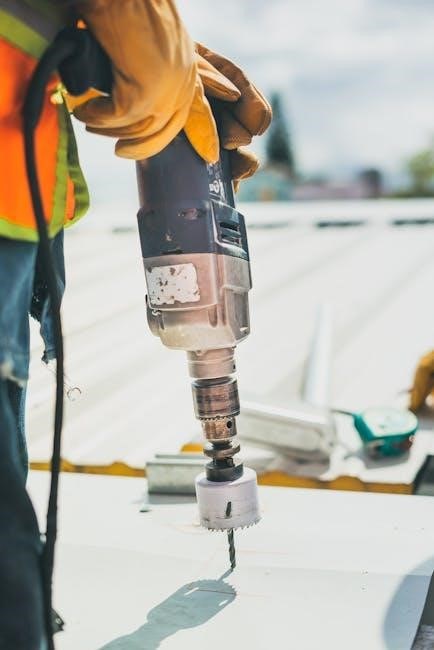
Site Preparation and Requirements
Ensure ideal locations for both indoor and outdoor units‚ considering space‚ ventilation‚ and electrical access. Prepare the site with proper environmental considerations for optimal system operation.
4.1 Ideal Locations for Indoor and Outdoor Units
The indoor unit should be installed in a location that allows for optimal airflow and accessibility‚ such as a wall in a central area of the room. Ensure it is not obstructed by furniture or drapes. For the outdoor unit‚ choose a well-ventilated area‚ away from direct sunlight and potential sources of obstruction. Avoid placing it in enclosed spaces or near flammable materials. The outdoor unit should also be positioned on a level surface to ensure proper operation and drainage. Ideal locations include server rooms‚ classrooms‚ or small offices where precise temperature control is essential. Proper placement ensures efficient cooling and minimizes potential issues during operation.
4.2 Site Readiness and Environmental Considerations
Ensuring the installation site is properly prepared is crucial for the TRUZA0121KA70NA system. The area must be clear of debris and structurally sound to support the unit’s weight. Environmental factors such as temperature‚ humidity‚ and airflow should be evaluated to ensure optimal performance. The system operates best in temperatures between 32°F and 122°F (0°C to 50°C) and requires adequate ventilation to prevent overheating. Avoid installing near sources of moisture or chemicals‚ as they may damage components. Additionally‚ consider noise levels‚ especially in residential areas‚ and ensure compliance with local building codes and environmental regulations. Proper site readiness and environmental considerations are essential for system reliability and longevity.
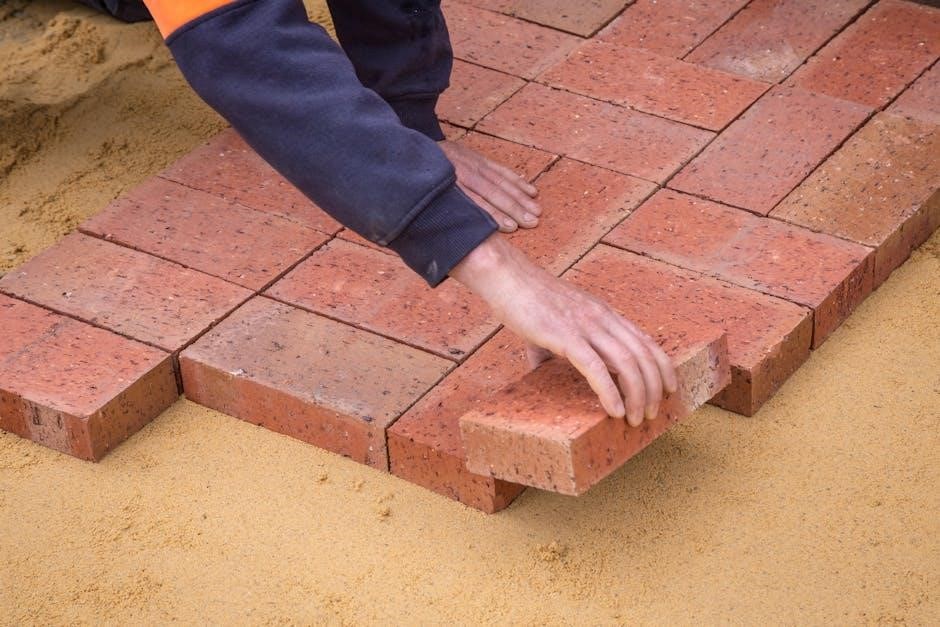
Installation Process
The installation process involves mounting the indoor unit securely‚ connecting refrigerant lines‚ and ensuring proper electrical connections. Follow the manual’s step-by-step guide for a safe setup.
5.1 Mounting the Indoor Unit
Mounting the indoor unit requires careful planning and execution to ensure proper installation. First‚ select a suitable location for the unit‚ ensuring it is level‚ secure‚ and away from direct sunlight or obstructions. Use the mounting kit provided‚ which includes brackets and screws‚ to attach the unit to the wall. Ensure the surface is sturdy enough to support the unit’s weight. Follow the manufacturer’s instructions for drilling holes and securing the brackets. Once the brackets are in place‚ gently lift the indoor unit and align it with the mounting hooks or brackets. Tighten all screws firmly to prevent vibration or movement. After installation‚ double-check that the unit is level and properly aligned to ensure optimal performance and safety. Proper mounting is critical for efficient operation and longevity of the system.
5.2 Installing the Outdoor Unit
Installing the outdoor unit requires careful planning and adherence to safety guidelines. Ensure the unit is placed on a firm‚ level surface‚ ideally in a shaded area to optimize performance. Maintain a minimum distance of 3 meters from the indoor unit to ensure proper airflow and reduce noise. Use a concrete pad or anti-vibration mount to prevent movement and vibration. Ensure proper drainage by tilting the unit slightly. Secure the unit with anchor brackets to prevent displacement due to wind or other external forces. Connect the refrigerant lines and electrical connections as per the manual. Always wear protective equipment during installation. Follow local building codes and manufacturer specifications for a safe and efficient setup. Ensure the area is clear of debris and obstructions for optimal operation.
5.3 Connecting Refrigerant Lines and Electrical Connections
Connecting refrigerant lines and electrical connections is a critical step in the installation process. Ensure all lines are properly insulated and securely fastened to prevent leaks or damage. Use appropriate tools to tighten connections firmly‚ following the manufacturer’s torque specifications. For electrical connections‚ refer to the wiring diagram in the manual and ensure all wires are correctly matched and securely fastened. Double-check for any loose connections or signs of wear. Use a multimeter to verify electrical continuity and ensure no short circuits exist. Finally‚ test the system under load to confirm proper operation and refrigerant flow. Always follow safety guidelines to avoid electrical shock or refrigerant exposure.
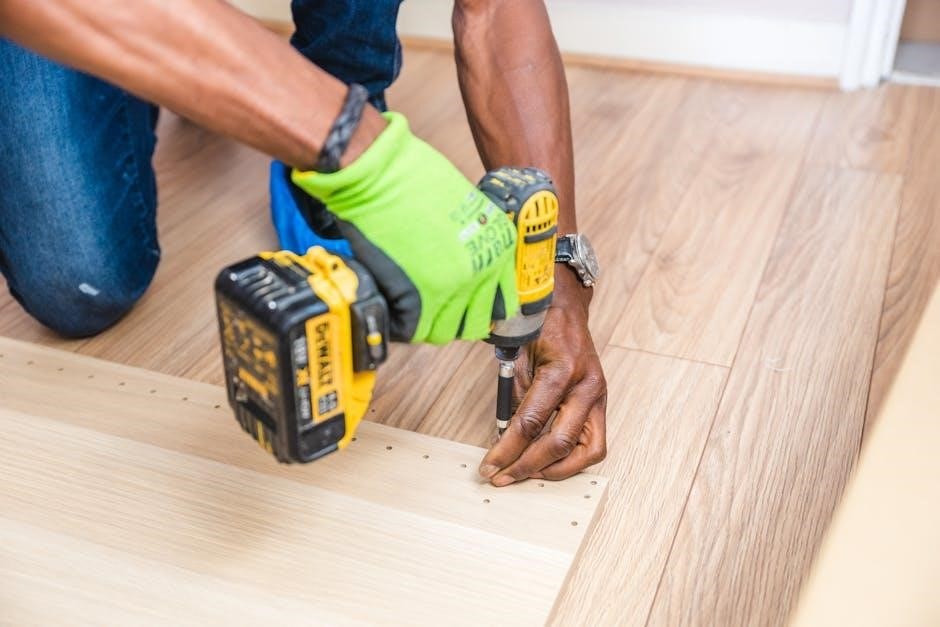
Commissioning and Startup
Commissioning involves initial system startup and testing to ensure proper operation. This step confirms all components function as intended‚ verifying settings and performance metrics for optimal efficiency.
6.1 Initial System Startup and Testing
After completing the installation‚ perform the initial startup to ensure the system operates correctly. Begin by turning on the power supply to both indoor and outdoor units. Set the remote controller to the desired mode (cooling‚ heating‚ or fan) and adjust the temperature. Allow the system to run for 10–15 minutes to stabilize. Check for unusual noises‚ vibrations‚ or leaks during operation. Verify that the indoor unit’s air vents are open and unobstructed. Test the system in all operating modes to confirm functionality. If issues arise‚ refer to the troubleshooting section. Ensure all safety features‚ such as automatic shut-off‚ are functioning properly. Record any observations for future maintenance reference.
6.2 Checking for Refrigerant Leaks
After completing the installation‚ it is crucial to perform a thorough check for refrigerant leaks to ensure system efficiency and safety. Begin by inspecting all connections‚ including refrigerant lines‚ joints‚ and valves. Use an electronic leak detector or apply soapsuds to detect any escaping refrigerant. If a leak is identified‚ turn off the system immediately and address the issue by tightening connections or replacing damaged components. Repeat the leak check after repairs to confirm resolution. Regular inspections during maintenance can prevent future leaks‚ ensuring optimal system performance and minimizing environmental impact. Always follow safety protocols when handling refrigerants to avoid hazards. A leak-free system is essential for reliability and energy efficiency.

Troubleshooting Common Issues
Address common issues like refrigerant leaks or electrical malfunctions by following diagnostic steps in the manual. Ensure proper connections and verify system settings for optimal operation.
7.1 Diagnosing Installation-Related Problems
Diagnosing installation-related issues with the TRUZA0121KA70NA system involves a systematic approach to identify and resolve common problems. Start by reviewing the installation steps to ensure all connections‚ including refrigerant lines and electrical wiring‚ are secure and properly configured. Check for leaks in the refrigerant lines‚ as this is a frequent issue that can lead to system malfunctions. Verify that all safety devices and sensors are functioning correctly‚ as faulty sensors can disrupt operation. Additionally‚ ensure that the system controls are correctly programmed and that the outdoor and indoor units are properly aligned. If issues persist‚ consult the troubleshooting section or contact a certified technician for assistance.
7.2 Resolving Common Errors and Malfunctions
Common issues during installation or operation may include error codes‚ refrigerant leaks‚ or electrical malfunctions. Always refer to the troubleshooting section in the manual for specific guidance. If the system displays an error code‚ check the user manual or the control panel for explanations. For refrigerant leaks‚ ensure all connections are secure and consider using a leak detection kit. Electrical issues‚ such as tripped circuit breakers‚ may indicate overloaded circuits or faulty wiring. Restarting the system or resetting the circuit breaker can often resolve these problems. If issues persist‚ contact a certified technician to avoid further damage. Regular maintenance can prevent many common malfunctions‚ ensuring efficient system performance.
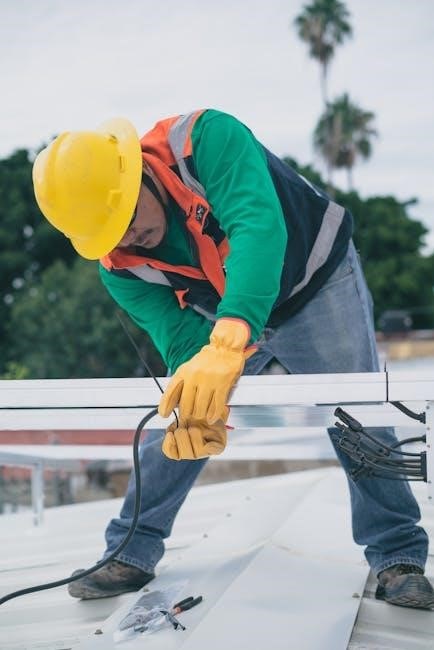
Maintenance and Upkeep
Regular maintenance ensures optimal performance and longevity. Schedule filters cleaning‚ coil inspections‚ and professional checks annually. Adhere to the recommended maintenance schedule for efficiency and safety.
8.1 Regular Maintenance Tasks for Optimal Performance
Regular maintenance is crucial for ensuring the TRUZA0121KA70NA system operates efficiently and effectively. Essential tasks include cleaning air filters every 1-3 months to maintain airflow and system performance. Inspect and clean the outdoor unit’s condenser coils annually to prevent dust buildup and reduce energy consumption. Check and tighten all electrical connections to avoid loose contacts that could lead to malfunctions. Drain lines should be inspected and cleared of blockages to ensure proper water flow. Additionally‚ lubricate moving parts like fan motors annually to maintain smooth operation. Always use genuine replacement parts to uphold system integrity. Adhering to these tasks ensures optimal performance‚ energy efficiency‚ and extended system lifespan. Schedule professional maintenance at least once a year for a comprehensive checkup.
8.2 Recommended Maintenance Schedule
To ensure the TRUZA0121KA70NA system operates efficiently and reliably‚ adhere to the following maintenance schedule:
- Monthly: Clean air filters and inspect for damage. Check drain hoses for blockages and ensure proper drainage.
- Quarterly: Inspect outdoor unit coils for dirt or debris and clean as needed. Verify refrigerant line connections are secure.
- Annually: Schedule a professional inspection to check refrigerant levels‚ test electrical connections‚ and evaluate system performance.
Regular maintenance ensures optimal performance‚ prevents breakdowns‚ and extends system lifespan. Always follow manufacturer guidelines for best results.

Compliance and Certifications
The TRUZA0121KA70NA system adheres to industry safety and environmental standards‚ utilizing R410A refrigerant for eco-friendly operation. It meets ENERGY STAR and UL certifications‚ ensuring reliability and efficiency.
9.1 Industry Standards and Regulations
The TRUZA0121KA70NA system is designed to comply with industry standards and regulations‚ ensuring safe and efficient operation. It adheres to ASHRAE (American Society of Heating‚ Refrigerating‚ and Air-Conditioning Engineers) guidelines for HVAC systems. Additionally‚ it meets UL (Underwriters Laboratories) and ETL (Intertek) certifications‚ guaranteeing compliance with safety and performance standards. The system is also aligned with EPA (Environmental Protection Agency) regulations regarding refrigerant handling and environmental impact. By following these standards‚ the unit ensures energy efficiency‚ reduced emissions‚ and adherence to local building codes. Proper installation and maintenance are critical to maintaining compliance and ensuring the system operates within specified parameters for optimal performance and environmental responsibility.
9.2 Certifications and Compliance Requirements
The TRUZA0121KA70NA system meets stringent industry standards and regulations‚ ensuring compliance with safety and environmental requirements. It is certified by recognized bodies such as UL and AHRI‚ guaranteeing adherence to quality and performance benchmarks.
Additionally‚ the system is Energy Star certified‚ reflecting its energy efficiency and eco-friendly design. Compliance with these certifications ensures the unit operates safely‚ efficiently‚ and in harmony with environmental regulations‚ providing long-term reliability and peace of mind for users.
Successful installation ensures optimal performance‚ safety‚ and system longevity. Always follow guidelines for a reliable setup‚ adhering to safety standards and manufacturer recommendations for best results.
10.1 Final Checklist for Successful Installation
Ensure all safety precautions are followed and essential tools are available. Verify proper mounting of indoor and outdoor units. Check refrigerant lines and electrical connections for leaks or damage. Confirm system startup and test functionality. Inspect for any installation-related issues and resolve them. Ensure compliance with industry standards and regulations. Review the installation manual to confirm all steps are completed. Document the installation process and maintain records. Conduct a final visual inspection of the system. Test the system under various operating conditions to ensure optimal performance. Provide user instructions and safety guidelines. Confirm all warranties and certifications are in place. Ensure proper cleanup of the installation site. Finalize and hand over the system to the user.
10.2 Importance of Proper Installation for System Longevity
Proper installation is crucial for ensuring the longevity and efficiency of the TRUZA0121KA70NA system. A well-executed installation prevents potential issues such as refrigerant leaks‚ electrical malfunctions‚ and premature wear of components. By following the manual’s guidelines‚ installers can guarantee that the system operates within its designed parameters‚ reducing the risk of breakdowns and extending its lifespan. Improper installation can lead to decreased performance‚ increased energy consumption‚ and shorter system life. Adhering to the manual ensures compliance with manufacturer standards‚ preserving the warranty and maintaining optimal functionality over time.